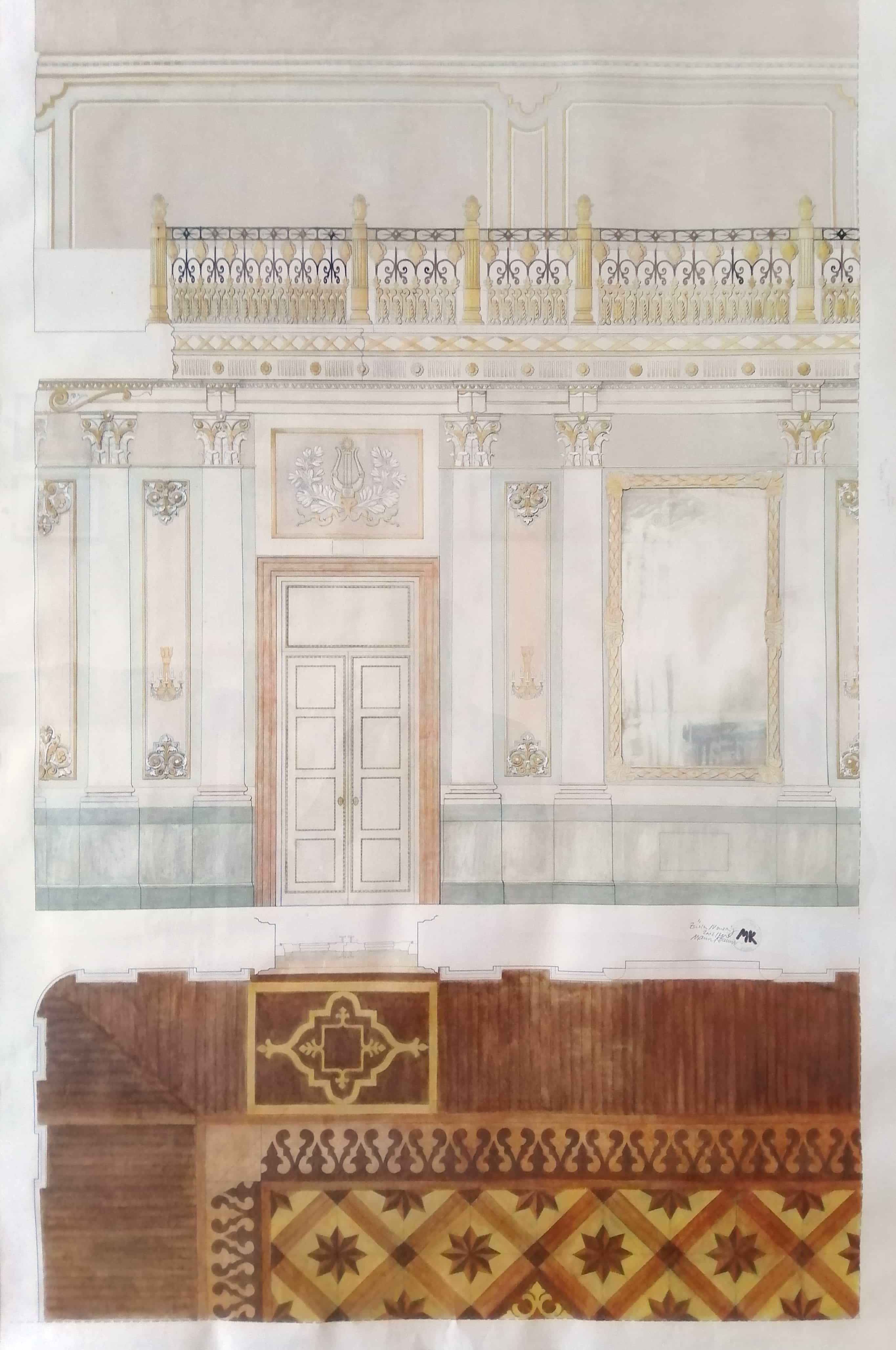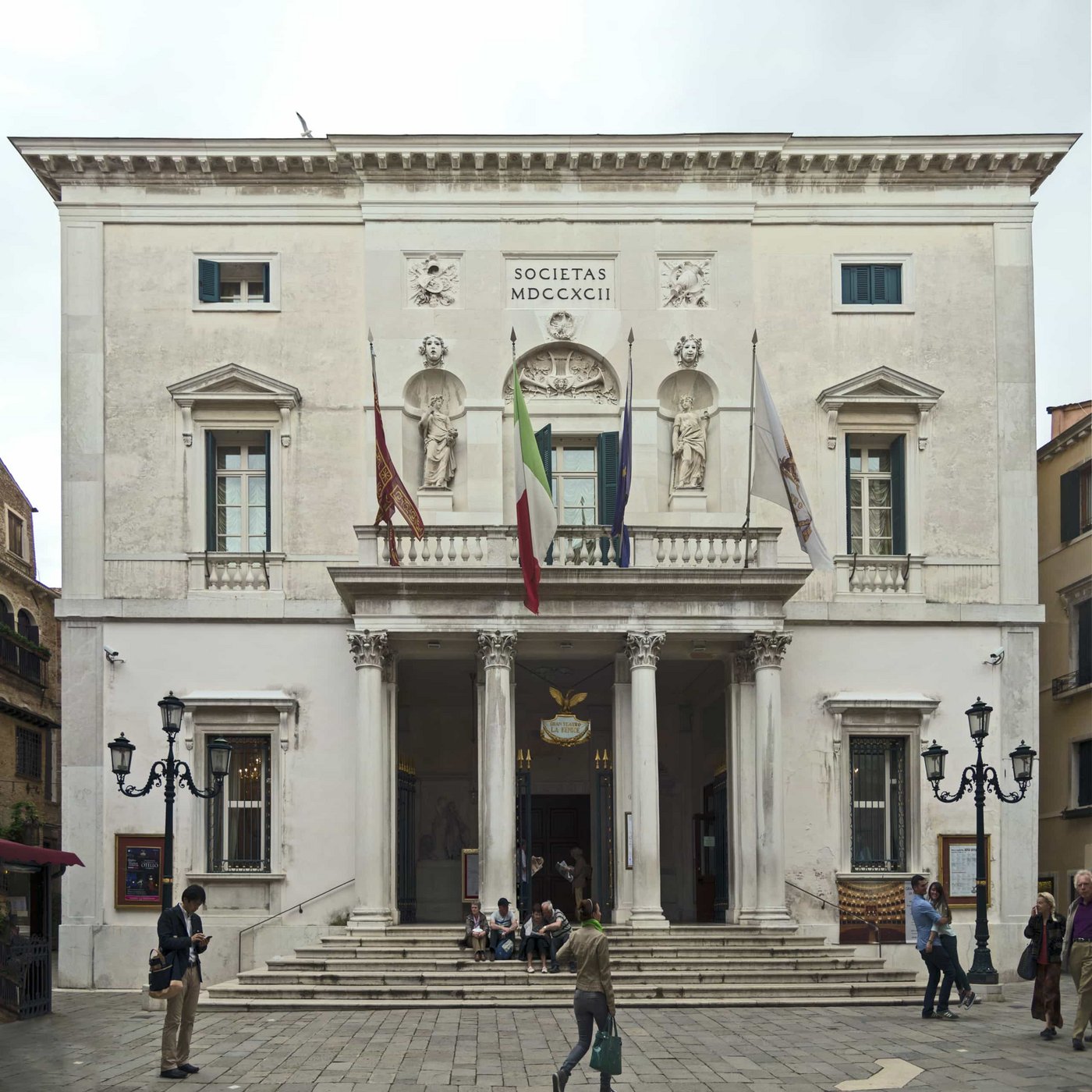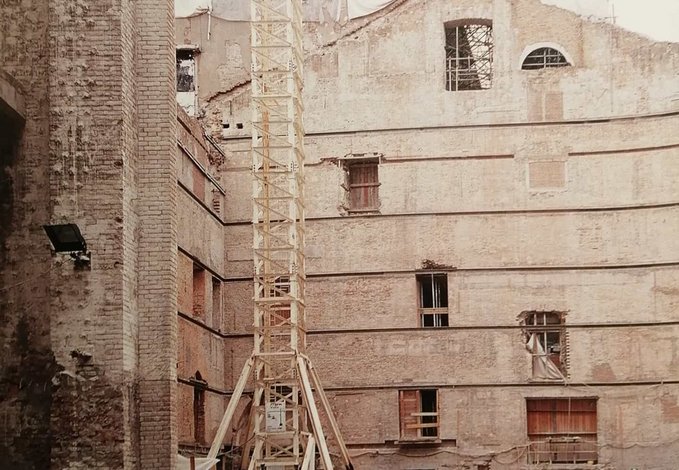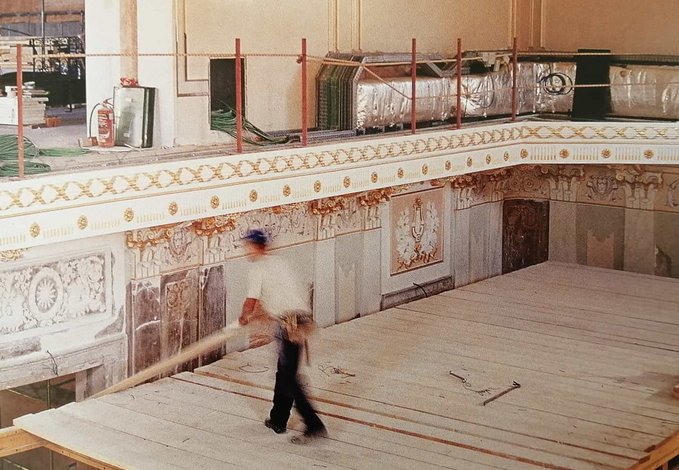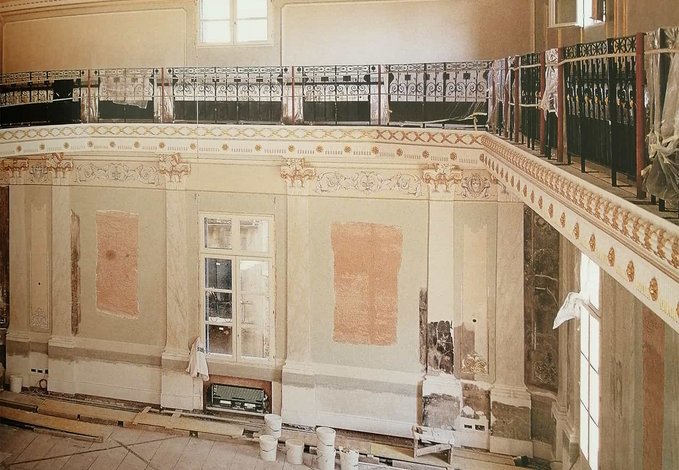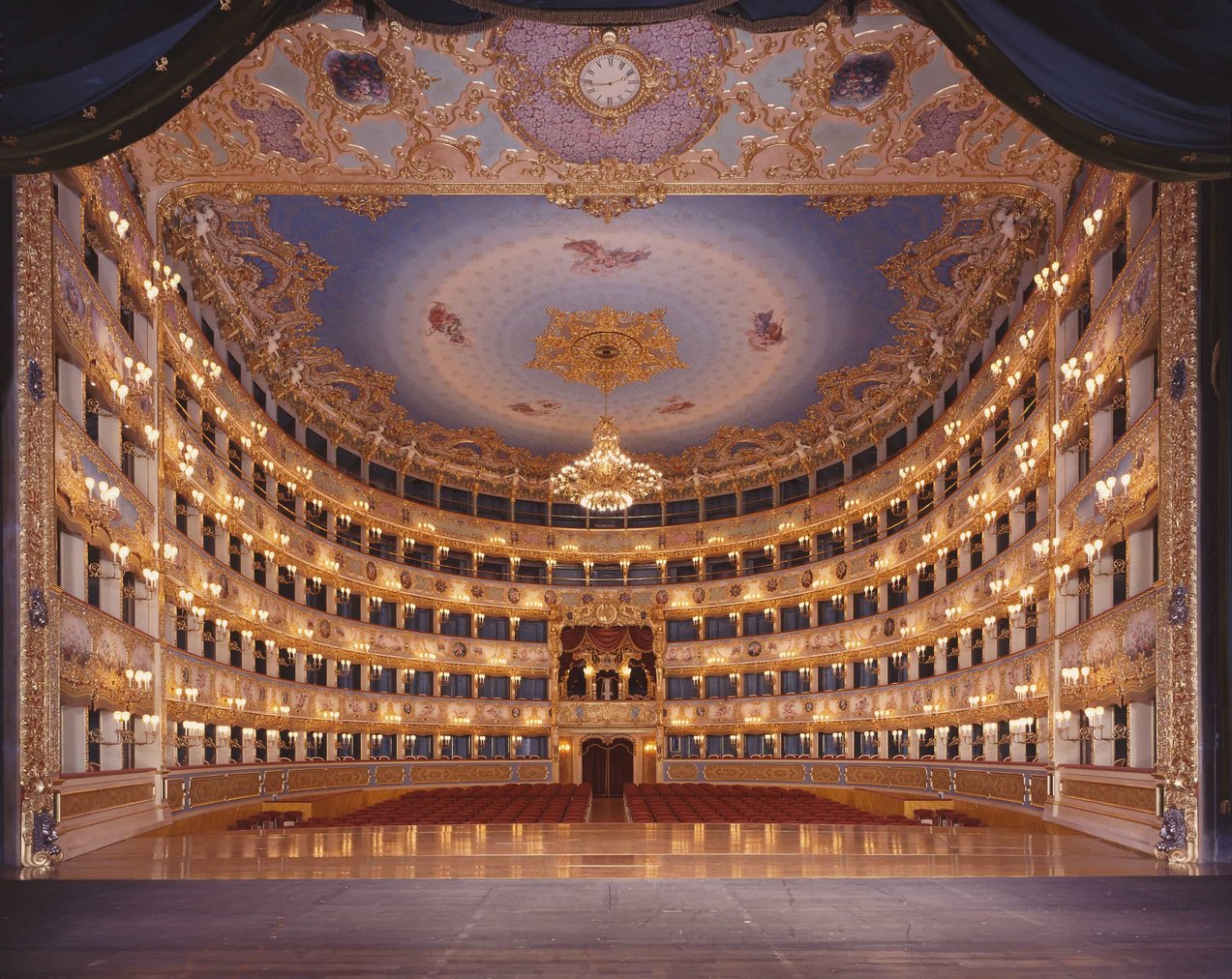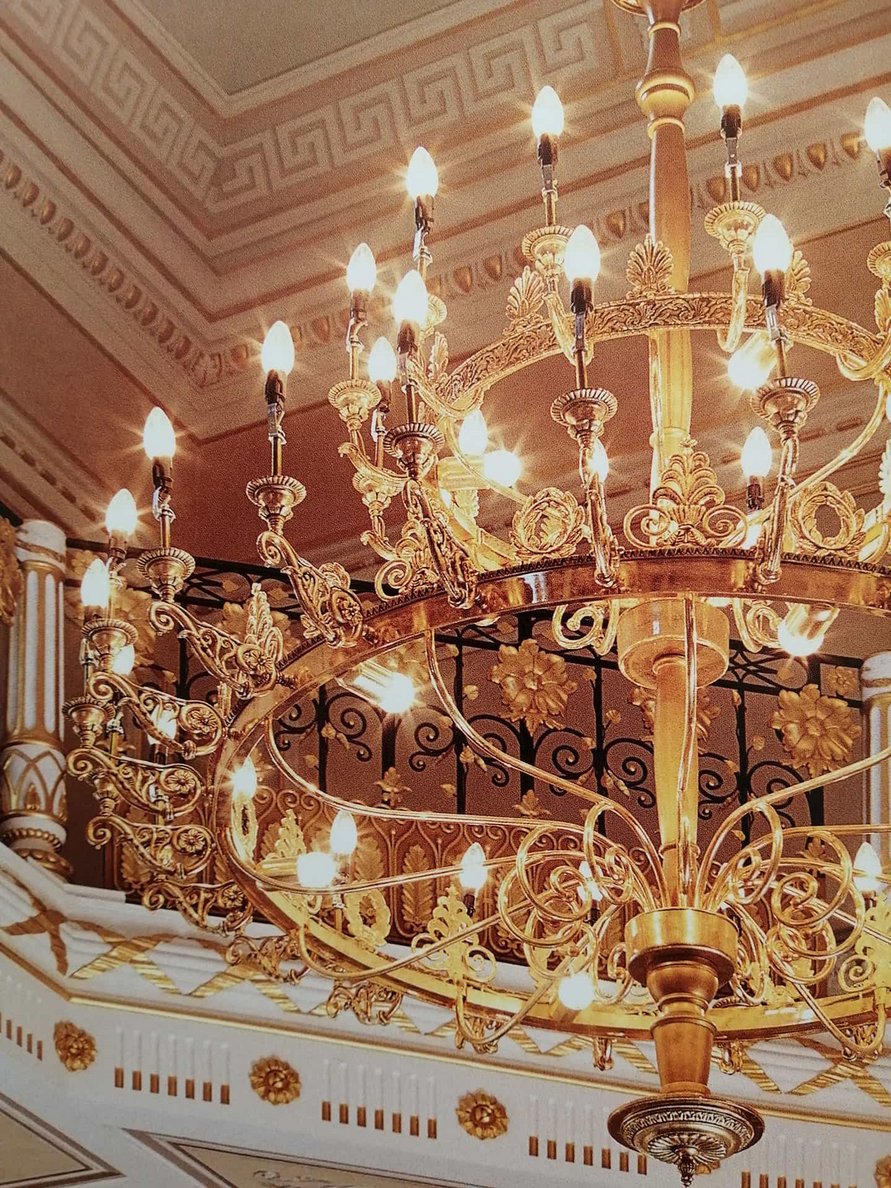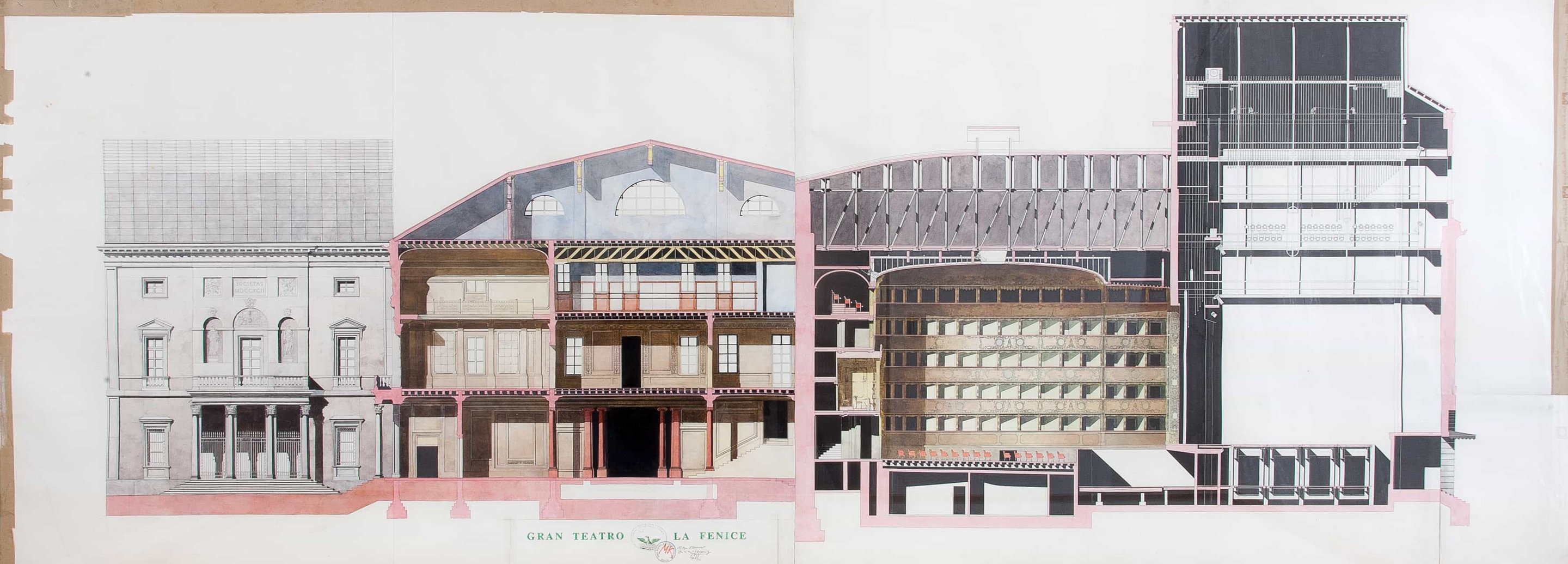The participation of Marc Kocher in the rebuilding of the Gran Teatro La Fenice opera house in Venice, which burned down to the foundations in 1996, is a landmark in the oeuvre of the architect and led the way for his subsequent work. In his involvement with the historic opera, he developed an understanding of architecture that influences his building to the present day.
The architecture competition of 1997 had the vision on the one hand of reconstructing the opera “com’era, dov’era” (where it was and how it was). At the same time, the complex, which was to be built anew, should satisfy the latest technical requirements and be one of the most modern opera houses in the world. The architect Aldo Rossi, who had a decisive influence on Kocher, initially asserted himself in this competition. The project was then carried out by his successor, the Arassociati architecture agency.
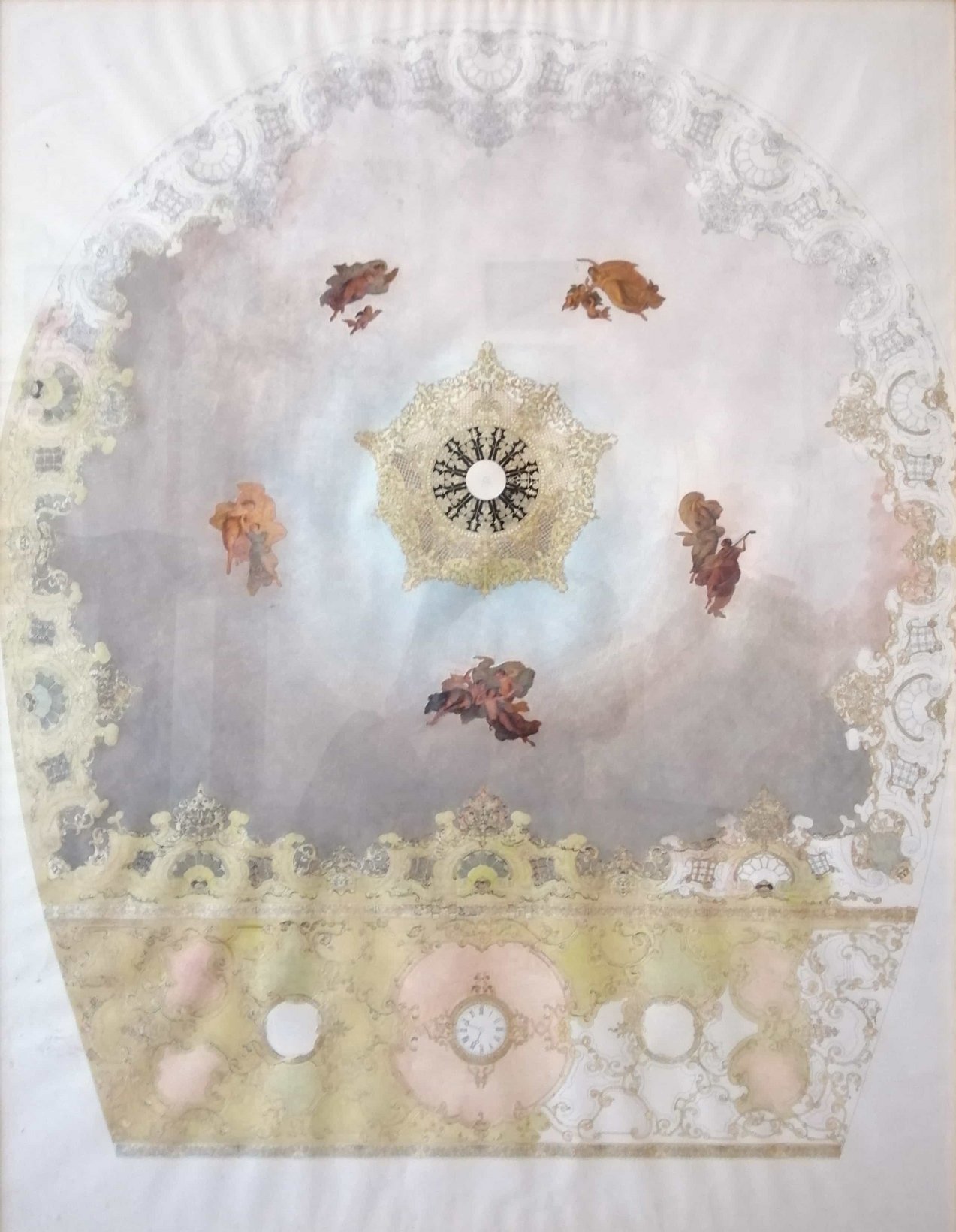
The focus of his work was on artisanal realisation: the drawing of the individual decoration elements in original scale, which would later be designed, whereby the components not destroyed by the fire were preserved and integrated. For the processing of the walls, Kocher applied seven different coats of paint as glazes on top of one another in order to achieve a translucent effect of the pastel shades. For this extremely complicated artistic approach, Kocher intensively studied photos and film documents on location over a period of three years.
Artisanal approach
Of central importance for the faithful reconstruction of the building was the engagement with the Classicist building from 1790 and its “apparato decorativo”. Kocher assumed responsibility in particular for the restoration of the wall and ceiling décor of the Sale Apollinee, the intermission halls, inside the building.
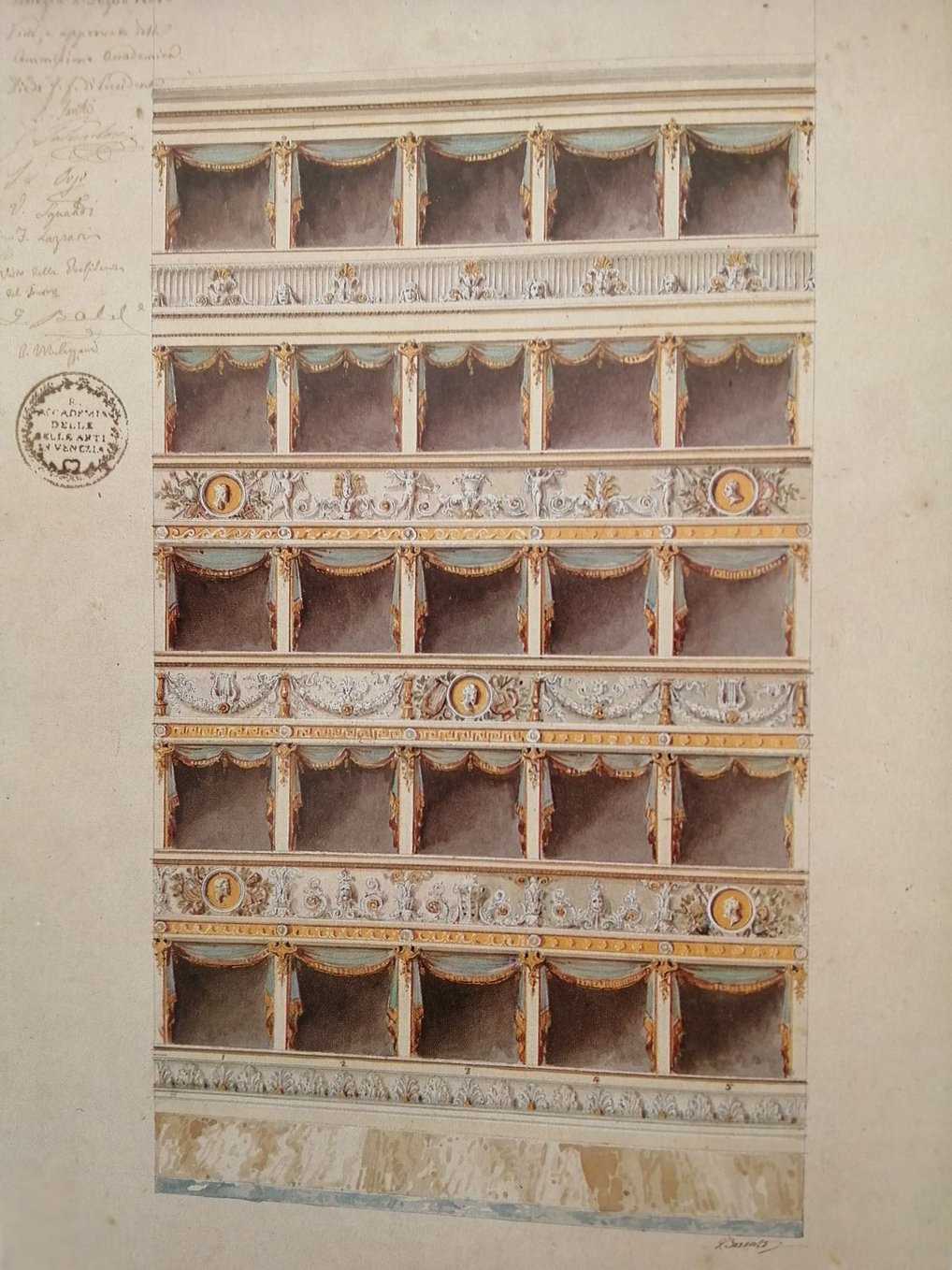
The modern opera house visually presents the history of the building to the viewer and listener, in that it resurrects the historic building. Thanks to the sensitive procedure for the integration of moderner technology and intensive involvement with the original draft, “many of the characteristics of the original draft of 1790 lost over the centuries could now be incorporated again. While the theatre today presents itself in its historical garb, it can nonetheless be clearly recognised at individual, well-chosen points that the present in which it was built is reflected in the architecture of the theatre.”
Luigi Monzo: Auf der Suche nach der verlorenen Identität. 17 January 2021. luigimonzo.com
